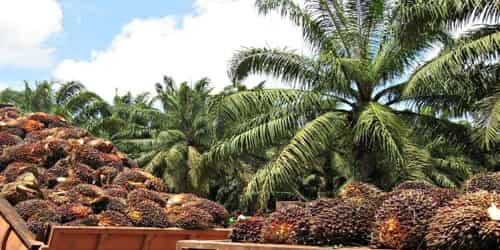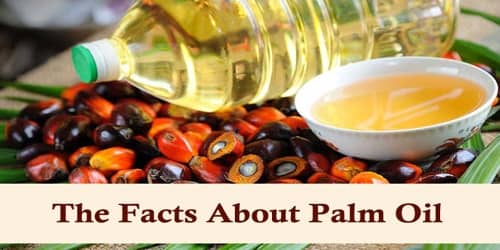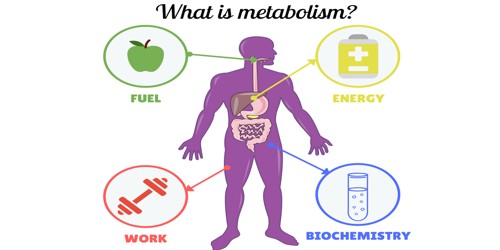The Facts about Palm Oil
Palm oil: Palm oil is an edible vegetable oil which is derived from the mesocarp i.e. reddish pulp comes from the fruit of oil palms. It is naturally reddish in color because of a high beta-carotene content. It is not to be confused with palm kernel oil derived from the kernel of the same fruit or coconut oil derived from the kernel of the coconut palm (Cocos nucifera). Palm oil produced in Central and West Africa.
However, is in Malaysia and Indonesia where the clear majority of the oil is produced. This two-country account for 90 percent of the entire world palm oil production.
The largest importer of palm oil is India (22%), followed by the European Union (14%, 10 million tonnes) and China (11%) (IDH, 2016). The largest users of palm oil are India (9.1 million tonnes) and Indonesia (8.5 million tonnes) – countries in which palm oil is traditionally used for cooking. The EU is the third-largest consumer of palm oil.
Palm oil is obtained from the yellow or orange-coloured flesh of the fruit. Shortly before harvesting the oil content of the fruit is at its highest – between 45 and 50 percent. After harvesting the ripe fruits are sterilised and pressed. This yields crude palm oil (CPO).
Almost 70 per cent of the world’s palm oil is used in food production. Another five percent is used as a biofuel. The remaining 25 per cent is used in cosmetics, soaps and detergents, candles, or as a lubricant in industry.
Palm oil is also used to make milk substitutes to feed calves in dairies in the German alps. These milk substitutes contain 30 percent milk powder and the remainder of raw protein made from skimmed milk powder, whey powder, and vegetable fats, mostly coconut oil and palm oil.

The Fact: There is no other vegetable oil on the planet that shows up in such a vast array of consumer goods, making consumers unknowingly complicit in horrific crimes against animals, people, and the environment.
- According to the World Wildlife Fund, there are about 20 million hectares of abandoned land available to grow palm oil trees. However, firms used to prefer clearing forests first to get double profit. One is by selling timber trees and another is for the oil.
- Palm oil is high in saturated fat. One tablespoon of palm oil contains 55 percent of the daily recommendation of saturated fat.
- Up to 300 football fields of forest are cleared every HOUR to make room for palm plantations.
- In the past 10 years, the orangutan population has decreased by 50 percent as the result of habitat loss from forest clearing for palm plantations.
- There are only 6,300 Sumatran orangutans left. It is estimated that 1,000 orangutans are killed a year, a major factor in these deaths being forest clearing for palm production. In 2006, at least 1,500 orangutans were clubbed to death by palm workers.
- Due to the palm oil plantation, Indonesia had the highest rate of deforestation in the world. Indonesia has managed to clear almost twice as much forest compared to Southern American country in certain years. Nearly 45 million people live in the forests of Indonesia. In 2011, Wilmar (one of the world’s largest palm oil producers) bulldozers ransacked an entire village, destroying 40 homes to clear 40,000 hectares of land for a palm plantation.
- South East Asia has been widely affected due to fires used to destroy the rain forests. People all around the world will be sad to know that around 110,000 people die prematurely each year because of this toxic air pollution.
- Only 35 percent of palm growers that are members of the Roundtable on Sustainable Palm Oil is actually certified by the RSPO. Meaning the other 65 percent pay to be “members,” but have taken no action to adhere to the RSPO guidelines in their growing practices.
- The palm oil industry also promoting child labor in remote areas of Indonesia-Malaysia leading to the human rights violation. They are made to carry high loads of heavy fruits. Also, they have been asked to spend long hours collecting fruits from the plantation floor.
- At the beginning of the 20th century, about 250,000 tonnes of palm oil was exported annually from South-East Asia. Now, these figures have risen to 60 million tonnes.
- RSPO standards allow growers to plant on peatlands and to clear secondary forests. Tropical peatlands store up to 10 times more carbon than “mineral soil,” meaning draining and planting on peat lands is up to 10 times more detrimental to the environment.
- There are many animal species about to extinct due to massive deforestation for creating space for palm oil plantation. Endangered species are Pygmy Elephant, Sumatran Tiger, Asian Rhinoceros, Sun Bear, Clouded Leopard, Malayan Tapir, Proboscis Monkey, Gibbon and much more.
The primary problem with the palm oil is the deforestation of rainforest to make way for oil palm plantations. So, when the forests go so does the wildlife and hence the greatest threat to the number of species increases. There are other adverse effects such as releases huge quantities of greenhouse gas and people are forcibly removed from their places. There are solutions that need to implement such as immediate plantation of rainforest, however, the ultimate solution will be the banning of all products made up of palm oil both at retailers and consumers end.
Information Source:
















